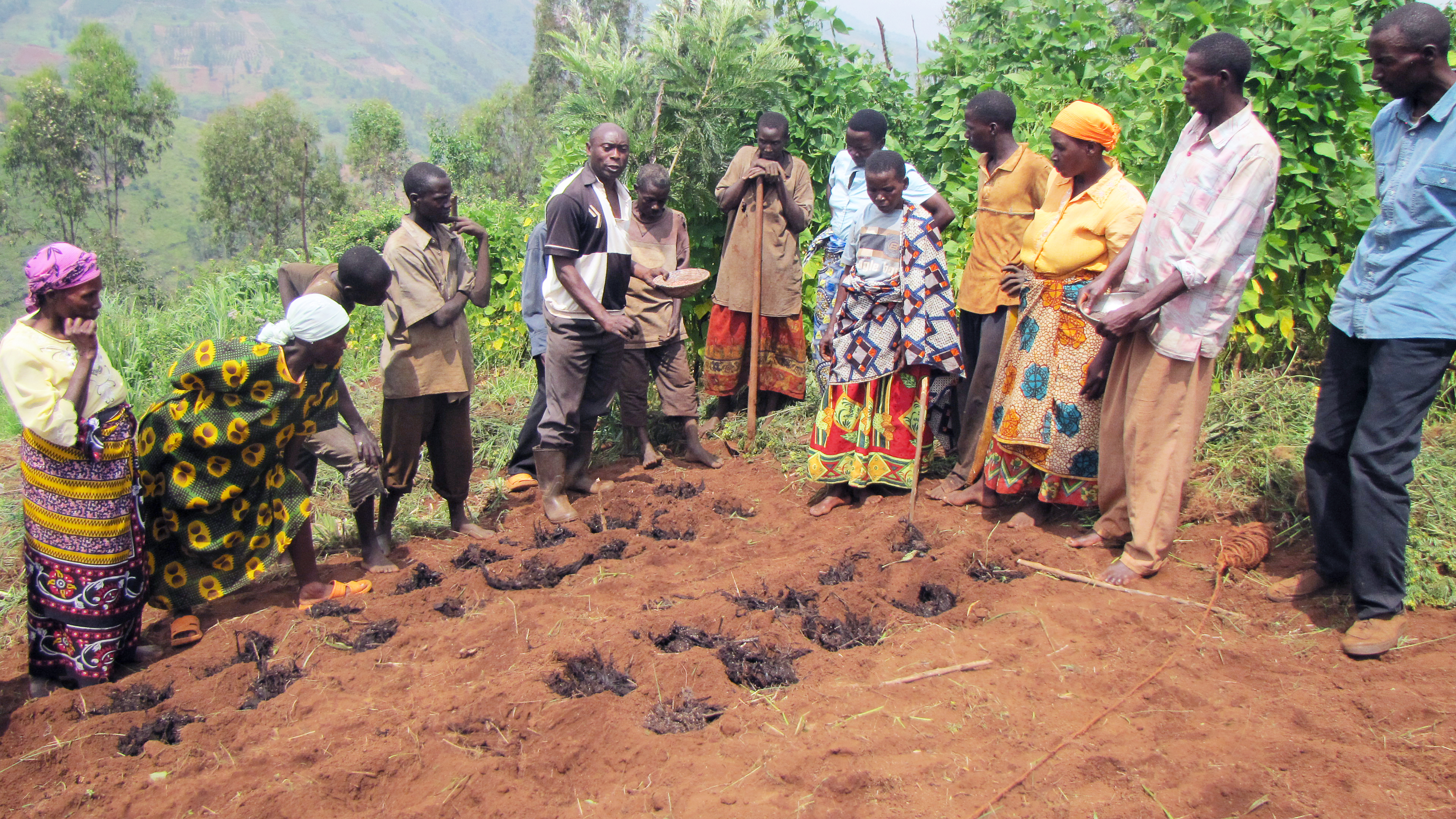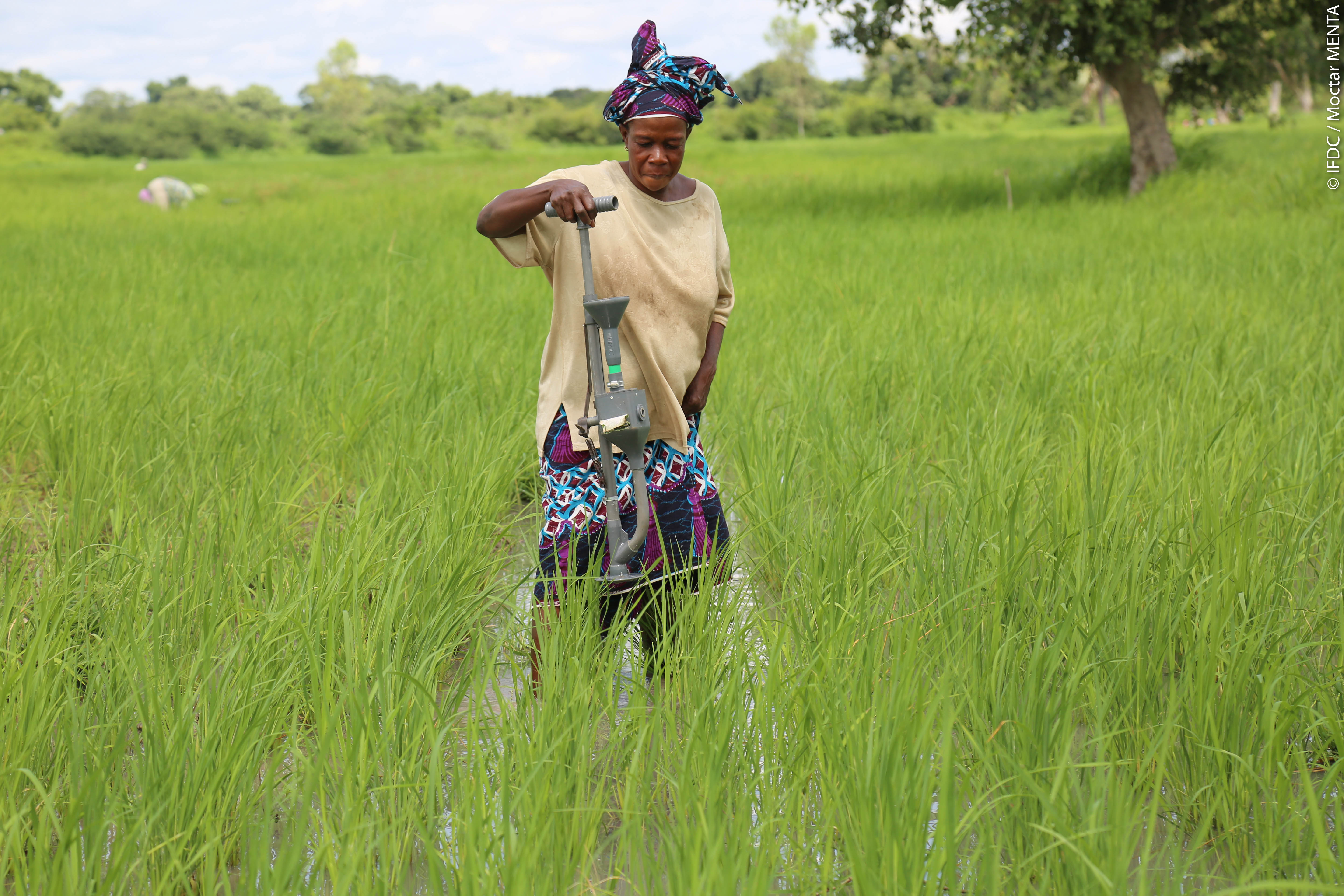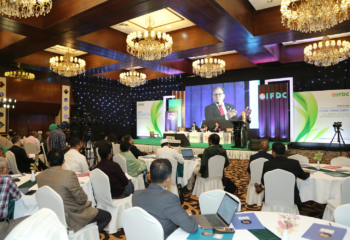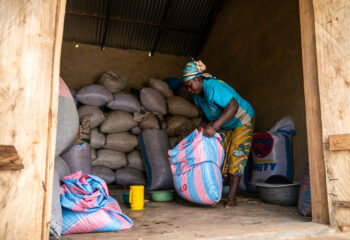By: Dr. Deborah Hellums, Director of Fertilizer Research
Every person alive depends on agriculture for food, but agriculture accounts for 12 percent of annual greenhouse gas emissions. About half of these emissions come from arguably a most necessary component of agriculture: the use of nitrogen fertilizers. Mineral fertilizers, combined with organic fertilizers (along with other inputs and best management practices), currently keep about half of the global population alive. Without them, soils become devoid of nutrients, leading to low and declining yields and soil degradation, including loss of soil carbon.
However, if fertilizer is overused (especially nitrogen fertilizer) this can lead to water pollution, acidification, and can contribute to greenhouse gas emissions.
So, what can be done to ensure sustainable agricultural productivity while mitigating fertilizer’s contribution to climate change?
At the International Fertilizer Development Center (IFDC), we are working to turn these anticipated climate change threats into opportunities. With expertise in soil and plant nutrition science, we know agriculture’s impact on climate can be reduced by increasing soil biomass to sequester atmospheric carbon dioxide (CO2), by intensifying crop production to reduce deforestation, and by developing and disseminating fertilizer technologies that reduce nutrient losses, especially those from nitrogen.
Fertilizer Increases Biomass to Sequester Carbon
It is sometimes easier to see the negative effects of fertilizer overuse; it is more difficult to see the negative effects associated with fertilizer underuse.
In sub-Saharan Africa (SSA), fertilizer application averages a rate of 12 kilograms per hectare (kg/ha). Though it varies by region and crop, this is only about 10 percent of the recommended rate. In West Africa, IFDC’s research has shown that this continuous non-fertilized cereal cultivation decreases crop yield, soil organic matter content, overall soil fertility and culminates in degraded land.
These agricultural soils hold the potential to be very productive and to serve as huge sinks for carbon capture, or “sequestration”. But this can only be accomplished by the application of appropriate fertilizers and best management practices including minimum tillage, residue management, and nutrient recycling (e.g., the reincorporation of biomass back into the soil).
Incorporation rates of 1-6 tons of biomass per hectare can gradually increase soil organic matter, sequestering up to 1,000 kg of carbon per hectare per year. However, this practice is limited due to low availability of biomass in SSA and the labor associated with incorporation. When this practice is sustained for more than a decade, good soil health will support yields, and good management practices, such as crop rotation, legume introduction, agroforestry, and integrated crop-livestock systems, will continue the process of carbon sequestration.
Fertilizer Intensifies Yields to Reduce Land Conversion
In addition to sequestering carbon, appropriately applied fertilizers may prevent deforestation and conversion of other lands into agricultural land. Currently, land conversion is the annual source of 12 percent of all greenhouse gases.
A further wrinkle in this situation appears when looking at population growth toward 2050. For example, to maintain a food self-sufficiency rate of 80 percent on the African continent, cereal production will need to be tripled. Without agricultural intensification, 80 million extra hectares would have to be cleared. Within one to two years of converting the land, 80-90 percent of the soil organic matter critical to fertility maintenance would be lost as carbon into the atmosphere.
But by allowing for the production of more food from less land, fertilizers have averted the conversion of about 1 billion hectares of virgin land into agricultural land since 1960. And they will continue to do so in the future as more efficient fertilizers are produced and applied with good management practices. Several organizations are now testing and mapping soil nutrient content in Africa and providing agribusinesses and fertilizer manufacturers with solid data on which to base fertilizer recommendations. Along with improving policy environments and better fertilizer blends (that include secondary and micronutrients), agricultural productivity in Africa is growing and primed for greater success.
Success Story: Urea Deep Placement
Mitigating the effects of climate change while sustaining and increasing agricultural productivity will also require creative approaches to new products. While the inherent nutritional needs of crops will not change, new application technologies to increase nutrient uptake can drastically reduce agricultural emissions. And we are seeing some success from this already.
For example, in Bangladesh, one of the most vulnerable nations to climate change, rice is intensively cultivated on 80 percent of all farms, most of which are half a hectare or less. Much of this rice is cultivated using a continuously standing water system in which the rice field is flooded. When farmers apply fertilizer, most broadcast urea (46 percent nitrogen), and because nitrogen is the most affordable product, overuse and low nutrient use efficiency are common. This results in major nitrogen losses due to leaching, surface water runoff, and volatilization of nitrous oxide.
As a solution, IFDC introduced urea deep placement (UDP) into Bangladesh, the implementation of which reduces urea use by 20-30 percent and increases yields by 15 percent across all growing seasons. Nearly 2 million farmers implement UDP with an annual incremental rice production of 340 kilotons (kt).
For dry season rice in Bangladesh, nitrous oxide emissions decrease by 60-80 percent, equivalent to about 200 kg CO2 per hectare from reduced fertilizer use and 70 kg CO2 per hectare from increased N uptake. The application of UDP on 0.4 million hectares of dry season rice has mitigated more than 100 kt CO2 equivalent, which, when scaled to the 3.8 million hectares of dry season rice suitable for UDP, can potentially reach 1,000 kt CO2 equivalent.
Looking Ahead
There is no doubt that the challenge ahead of agriculture is great. We are already witnessing the agricultural hurdles created by climate change while preparing to nourish a population of 9-10 billion by 2050. In addition, agricultural expansion is limited by available land and water resources. In some regions, land and water are already scarce. Finally, new weather patterns will change large and small producers’ cropping mix, practices and strategies. For the smallholders in developing countries, this may represent the most significant change they have experienced in hundreds of years.
Despite these obstacles, IFDC looks positively toward the future. We have the tools and capacity to overcome these hurdles, but we can no longer put off action. As agricultural scientists, it is our vocation and moral obligation to identify science solutions and best management strategies that ensure farmers worldwide live healthy, prosperous and productive lives and that they have the tools and ability to combat and mitigate the effects of future climate change.
This article originally appeared in F@rmletter, a publication of the World Farmers’ Organization.



